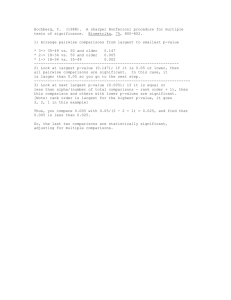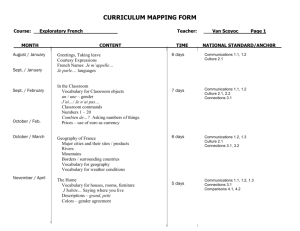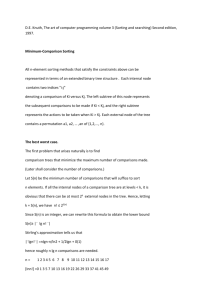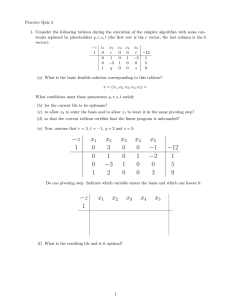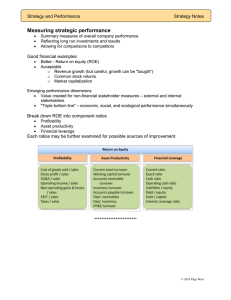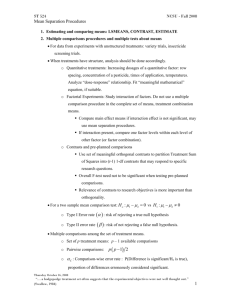Lecture 15: Multiple Comparisons Multiple Comparisons Conclusion Least Significant Difference
advertisement
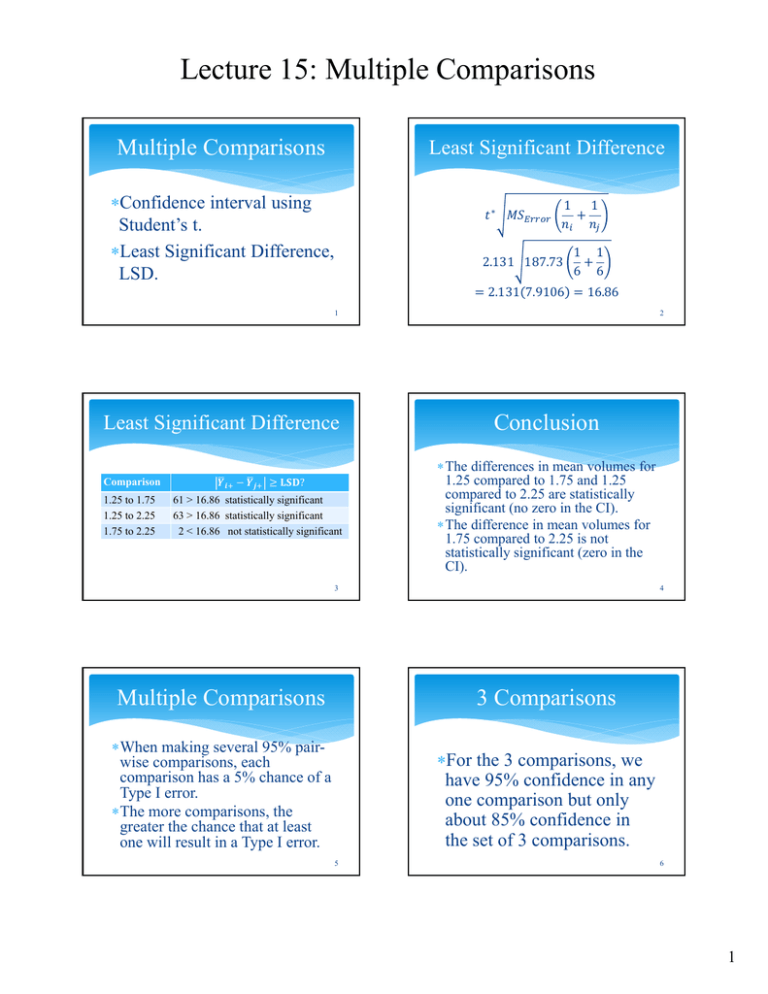
Lecture 15: Multiple Comparisons Multiple Comparisons Least Significant Difference Confidence interval using Student’s t. Least Significant Difference, LSD. ∗ 1 1 2.131 187.73 2.131 7.9106 1 6 1 6 16.86 1 Least Significant Difference Comparison 1.25 to 1.75 1.25 to 2.25 1.75 to 2.25 ? 61 > 16.86 statistically significant 63 > 16.86 statistically significant 2 < 16.86 not statistically significant 2 Conclusion The differences in mean volumes for 1.25 compared to 1.75 and 1.25 compared to 2.25 are statistically significant (no zero in the CI). The difference in mean volumes for 1.75 compared to 2.25 is not statistically significant (zero in the CI). 3 4 Multiple Comparisons 3 Comparisons When making several 95% pairwise comparisons, each comparison has a 5% chance of a Type I error. The more comparisons, the greater the chance that at least one will result in a Type I error. For the 3 comparisons, we have 95% confidence in any one comparison but only about 85% confidence in the set of 3 comparisons. 5 6 1 Lecture 15: Multiple Comparisons Lots of Comparisons Lots of Comparisons 20 comparisons – we expect to see 1 of those 20 comparisons result in a Type I error. 100 comparisons – we expect to see 5 of those 100 comparisons result in a Type I error. How do we know which statistically significant comparisons are identifying true differences and which are Type I errors? We don’t know! 7 8 Alternative Method Tukey’s HSD Tukey’s Honestly Significant Difference (HSD) Use a method of multiple comparisons that holds the chance of a Type I error for at least one comparison to 0.05. 1 1 9 Tukey’s HSD 10 Honestly Significant Difference Q = 2.59747 Comparison 1 1 2.5947 7.9106 1.25 to 1.75 1.25 to 2.25 1.75 to 2.25 ? 61 > 20.55 statistically significant 63 > 20.55 statistically significant 2 < 20.55 not statistically significant 20.55 11 12 2
